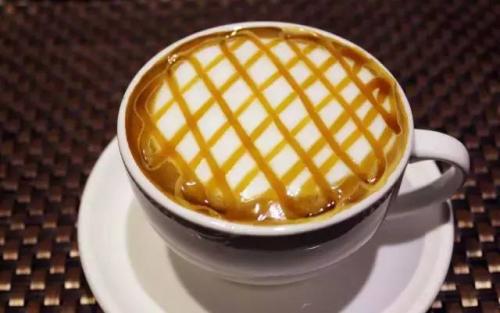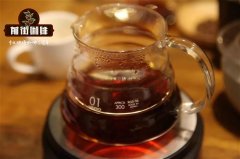Caramel macchiato is one of the most popular coffee for girls. Caramel macchiato method

Professional coffee knowledge exchange more coffee bean information please follow the coffee workshop (Wechat official account cafe_style)
Caramel macchiato (English: Caramel Macchiato) is a macchiato coffee with caramel added. A drink made by adding espresso and vanilla to strong hot milk and finally sprinkled with pure caramel, characterized by three different flavors in a cup of drink. Machiato means "brand" in Italian and squeezes a grid pattern on the milk foam like a seal. Caramel macchiato is a Machiato with caramel, representing "sweet mark". The sweet taste of caramel and the softness of milk foam neutralize the bitterness of espresso.
It can be said to be the sweeter one in the coffee category, and it is full of milk foam in one mouthful (those who like to drink milk foam can have a try! The appearance of caramelized color greatly improves the taste, and vanilla syrup and slippery hot milk can be added to the thick feeling. The sweeter you drink will come to your nostrils. It is suggested that friends who like to drink coffee can give it a try first! The sweet and mellow caramel macchiato becomes a good choice for coffee lovers to taste espresso.
Some people can't get rid of espresso, which is usually thick and bitter with soy sauce, fancy coffee or add foam or syrup to add delicacy. Fancy coffee served on the table in addition to the flavor is to enjoy the beautiful patterns, hot coffee with porcelain cups, you can use caramel on the milk foam drawing and flower drawing. The macchiato in the name of caramel macchiato refers to the contamination of milk foam by:
Pour one portion of 1.espresso into the bottom of the cup and stir well with half an ounce of syrup.
two。 Fill the cup with a few spoons of hot foam.
3. Put caramel in a squeeze bottle and draw patterns on the foam.
Macchiato also has ice, but iced macchiato does not have Cream. It is recommended to add a portion of milk foam when drinking iced macchiato in summer, so that caramel can be drenched on the foam to give the light foam a different flavor. The entrance is cold and sweet, smooth and refreshing. Macchidoga is also popular in Asia and is most popular among young people.
Important Notice :
前街咖啡 FrontStreet Coffee has moved to new addredd:
FrontStreet Coffee Address: 315,Donghua East Road,GuangZhou
Tel:020 38364473
- Prev

Where did the coffee come from? I'll show you the history of hand-made coffee!
Professional coffee knowledge exchange more coffee bean information please follow the coffee workshop (Wechat official account cafe_style) casually step into any boutique coffee shop, nine times out of ten there is at least one hand coffee maker. Although V60 filter cup and Chemex hand brewer have been around for decades, they are still the representative of the third wave of coffee fad. But how did hand coffee evolve? This simple method of cooking
- Next

What is hand-made coffee? The difference between it and espresso the advantage of hand-brewed coffee
Professional coffee knowledge exchange more coffee bean information please pay attention to the coffee workshop (Wechat official account cafe_style) hand-brewed coffee is currently a more popular way of tasting coffee in Europe, unlike Italian coffee, hand-brewed coffee removes the taste interference of other factors (milk, sugar, spices, etc.), using only water and coffee after grinding, compared with Italian coffee, hand-brewed coffee is used
Related
- Beginners will see the "Coffee pull flower" guide!
- What is the difference between ice blog purified milk and ordinary milk coffee?
- Why is the Philippines the largest producer of crops in Liberia?
- For coffee extraction, should the fine powder be retained?
- How does extracted espresso fill pressed powder? How much strength does it take to press the powder?
- How to make jasmine cold extract coffee? Is the jasmine + latte good?
- Will this little toy really make the coffee taste better? How does Lily Drip affect coffee extraction?
- Will the action of slapping the filter cup also affect coffee extraction?
- What's the difference between powder-to-water ratio and powder-to-liquid ratio?
- What is the Ethiopian local species? What does it have to do with Heirloom native species?

